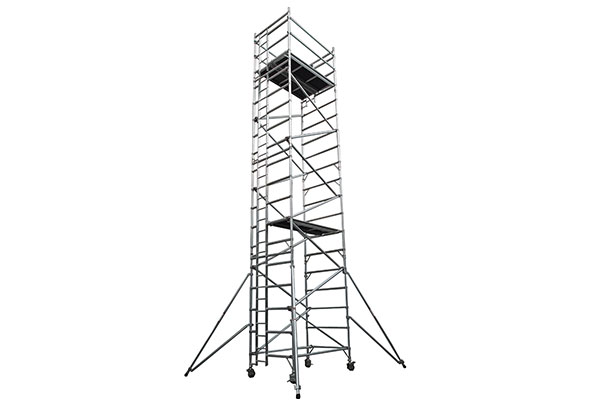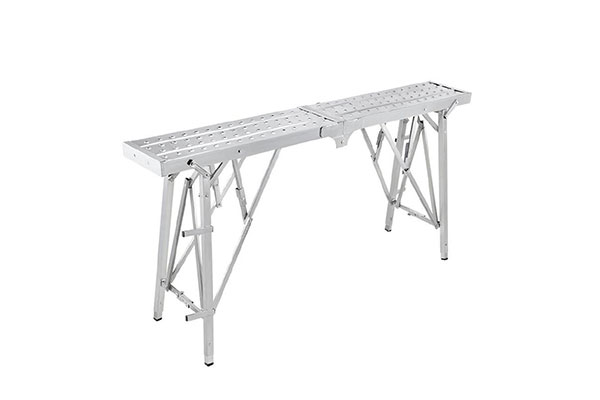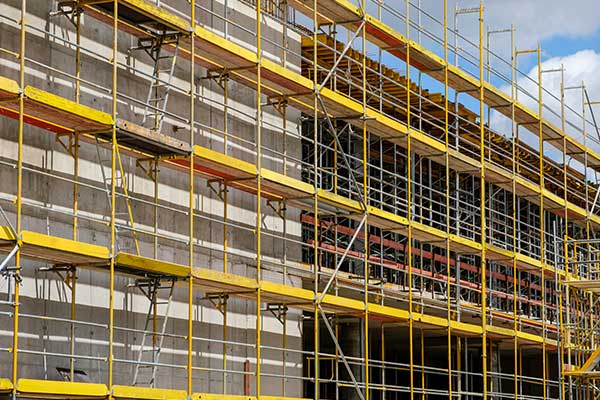Scaffold Tower vs. Work Platform: What’s the Difference?
When it comes to working at heights, choosing the right equipment is crucial for safety and efficiency. Two common options are scaffold towers and work platforms. While they may seem similar, they serve different purposes and are suited for different tasks. In this article, we’ll break down the differences between scaffold towers and work platforms to help you decide which one best suits your needs.

What is a Scaffold Tower?
A scaffold tower is a temporary, freestanding structure designed to provide a stable working surface at elevated heights. It consists of metal frames, braces, platforms, and casters (for mobile versions). Scaffold towers are commonly used in construction, maintenance, and painting projects where workers need extended access to higher areas.
Key Features of Scaffold Towers:
- Height Flexibility – Can be adjusted to different heights for various tasks.
- Modular Design – Components can be added or removed to suit the job.
- Mobility – Many scaffold towers come with wheels for easy repositioning.
- Load Capacity – Designed to hold multiple workers and heavy tools.
- Safety Rails – Equipped with guardrails to enhance worker safety.
Common Uses of Scaffold Towers:
- Exterior building maintenance and repairs
- Painting large structures
- Roofing work
- Window installation and cleaning

What is a Work Platform?
A work platform, also known as a podium step or access platform, is a compact structure that provides a secure and elevated workspace. Unlike scaffold towers, work platforms are typically lower in height and designed for shorter-duration tasks. They are ideal for environments where frequent repositioning is necessary, such as warehouses, workshops, and light maintenance jobs.
Key Features of Work Platforms:
- Compact Design – Takes up less space and is easy to transport.
- Fixed or Adjustable Height – Some models have adjustable heights, but they are generally lower than scaffold towers.
- Lightweight Construction – Easier to move compared to scaffold towers.
- Enhanced Safety – Wide steps and handrails improve worker stability.
Common Uses of Work Platforms:
- Electrical work and wiring installation
- Warehouse and storage access
- Interior maintenance and repairs
- DIY home improvement projects

Scaffold Tower vs. Work Platform: Key Differences
| Feature | Scaffold Tower | Work Platform |
|---|---|---|
| Height | Higher (up to 10m or more) | Lower (1-3m) |
| Mobility | Mobile with locking wheels | Some models are mobile, others fixed |
| Load Capacity | High, supports multiple workers | Lower, typically for one worker |
| Assembly Time | Requires setup | Ready to use or minimal setup |
Which One Should You Choose?
The choice between a scaffold tower and a work platform depends on the nature of your task.
- Choose a Scaffold Tower if: You need to work at significant heights for extended periods, require mobility, and need a sturdy structure to support multiple workers and heavy tools.
- Choose a Work Platform if: You need quick, safe access to slightly elevated areas for short-duration tasks in a compact workspace.
Conclusion
Both scaffold towers and work platforms are valuable tools for working at heights, but they cater to different job requirements. Understanding their differences helps you select the safest and most efficient option for your project.
Looking for high-quality scaffolding or work platforms? Contact us through info@shelterrc.com for expert recommendations and the best deals on durable and reliable access equipment!
